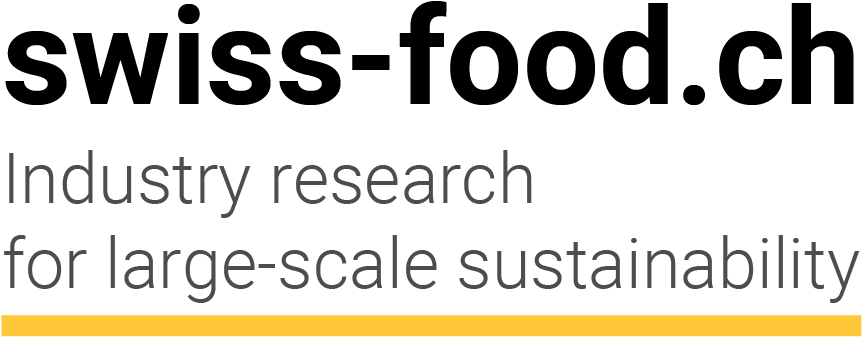
The search for the egg of the future
Boiled, stirred, fried: Eggs are not only popular at Easter. At the same time, there is increasing interest in alternatives to the animal protein products that are common in our country. The search for new protein sources therefore does not stop at chicken eggs. The "egg substitute" can come from exotic jellyfish, as well as from a wide variety of plant sources. The result: The demand for protein-rich crops is growing.
Friday, April 7, 2023
Most people know jellyfish as a rather unpleasant phenomenon on the beach. After all, some of them can cause allergic skin reactions or even burns when touched. However, as the "SRF" program 10vor10 reports, jellyfish could be a valuable new source of protein for humans. In Thailand, where fish and seafood are increasingly scarce due to overfishing, white jellyfish are becoming a delicacy. They are rich in proteins and are suitable as an ingredient for a wide variety of Asian dishes.
Diverse potential of jellyfish
“Weltwoche” also reports on jellyfish as a “superfood”. Jellyfish are rich in proteins and trace elements such as sodium, calcium, potassium, magnesium and selenium. In addition, they are free of cholesterol and fat. And the “fried jellyfish” that looks like its name is also fried. However, according to the EU research project "GoJelly", jellyfish are not only distinguished as alternative sources of protein. They can also be used as more environmentally friendly animal feed or fertilizers in agriculture, or they provide raw materials for cosmetic or pharmaceutical products. With their help, the sea can even be rid of microplastics. Researchers have made a filter from jellyfish slime that absorbs microplastics from the water.
Plant-Based Eggs
But researchers are not only focusing on jellyfish. A lot of research is being done around the world on alternative sources of protein. The focus is primarily on plant-based products. They are primarily intended to replace animal proteins that are ingested in the form of meat, dairy products or eggs. Companies such as Migros and Nestlé have developed plant-based eggs and recently launched them on the market. "The Boiled", the plant-based hard-boiled egg from Migros, consists of soy protein and was developed and manufactured by the Migros subsidiary ELSA in Switzerland over many years.
The company Nestlé has - also based on soy protein - created the egg mixture “vEGGie”, which can be used to make scrambled eggs or for baking. The young Berlin company ”Perfeggt”; has created a product based on field beans that can be used as a ready-beaten, whisked egg (as scrambled eggs). But since eggs with all their properties are so difficult to replace, especially in the food industry and gastronomy, the start-up EggField, founded in 2022, has developed plant-based egg alternatives that work like real eggs in recipes and in food processing. EggField's egg alternatives are free of allergens such as soy, contain no artificial additives and do not affect the taste of the final product, as founder Leibacher tells the magazine “foodaktuell”. This is because EggField extracts proteins and starch from legumes such as yellow peas and chickpeas, from potatoes, maize and tapioca and can reproduce the egg characteristics with this combination. EggField has applied for a patent for its product and the process. Another plus: EggField uses by-products of the food industry as far as possible, such as chickpea water, and thus contributes to the prevention of food waste.
Eggs can also be mushrooms
Anyone who has ever baked a cake knows how important beaten egg white is from a hen's egg. But the food industry is also dependent on many protein products - some liquid protein or protein powder. As “foodaktuell” writes, Finnish researchers have succeeded in producing chicken protein with the help of a fungus. They introduced the protein ovalbumin, which makes up 50 percent of chicken egg white, into the fungus called Trichoderma reesei. The result: The fungus independently produces the hen's egg protein ovalbumin. According to the researchers, the properties of the end product are the same as the protein from chicken eggs. The protein obtained using precision fermentation requires 90 percent less land area and produces up to 55 percent fewer greenhouse gases. Only the power consumption increases. It is therefore important to use CO2-free electricity.
Increasing demand for protein from the field
In addition to plant-based egg mass, Nestlé also offers vegan plant-based shrimp and plant-based tuna. In addition to soy products, algae could also play a greater role in human and animal nutrition in the future. Such innovations protect and use the sea in equal measure. However, this development also means that the demand for arable protein crops is increasing. Also in Switzerland. In order to meet the increasing demand for plant-based protein, the Federal Council proposed in the 2022 package of agricultural ordinances that individual crop contributions, which were previously limited in part to the cultivation of animal feed, can also be granted for the cultivation of protein plants for human consumption. Crops such as chickpeas or lentils should now also be eligible for contributions.
Precision fermentation brings desired flavor
The assortment of soy or other bean protein-based meat substitutes in our supermarkets is decades old - but still growing today. Bean protein is nutritious, available everywhere and inexpensive. However, the bean flavor often found in such products can be distracting when a taste as close to meat as possible is desired. New approaches are likely to remedy this situation as well: The undesirable flavors can be removed by precision fermentation.
Sources
Scienceindustries Point Newsletter «Aktuelle Biotechnologie», 249, March 2023 (in German)
Kindly note:
We, a non-native editorial team value clear and faultless communication. At times we have to prioritize speed over perfection, utilizing tools, that are still learning.
We are deepL sorry for any observed stylistic or spelling errors.
Related articles

Residues, thresholds, trust – looking calmly behind the headlines
In this conversation with toxicologist Lothar Aicher, the discussion focuses on how residues enter the body, how their potential harm is assessed, and what role modern analytical methods play.

Hazard is not the same as risk: how we understand – and should understand – threshold values
In this episode of the podcast, risk researcher Angela Bearth discusses residues and threshold values in food – a topic often debated emotionally. In public discussions, threshold values tend to dominate, while the complex challenges of agriculture are rarely considered. Studies show, however, that once these relationships are explained and solutions are addressed, people respond in a more differentiated way.

PFAS, trade-offs and responsibility – how politics and agriculture find solutions
In this episode of the joint series by Agrarpolitik – der Podcast and swiss-food.ch, National Councillor Christine Badertscher discusses how residues and threshold values are debated in Parliament.

Thresholds, approvals, responsibility – how plant protection products are really assessed
Threshold values are often at the centre of public debate – yet in reality they are only a small part of a much broader risk assessment system. Dr Michael Beer, Head of the Food and Nutrition Division at the Federal Food Safety Office, provides clarity.

